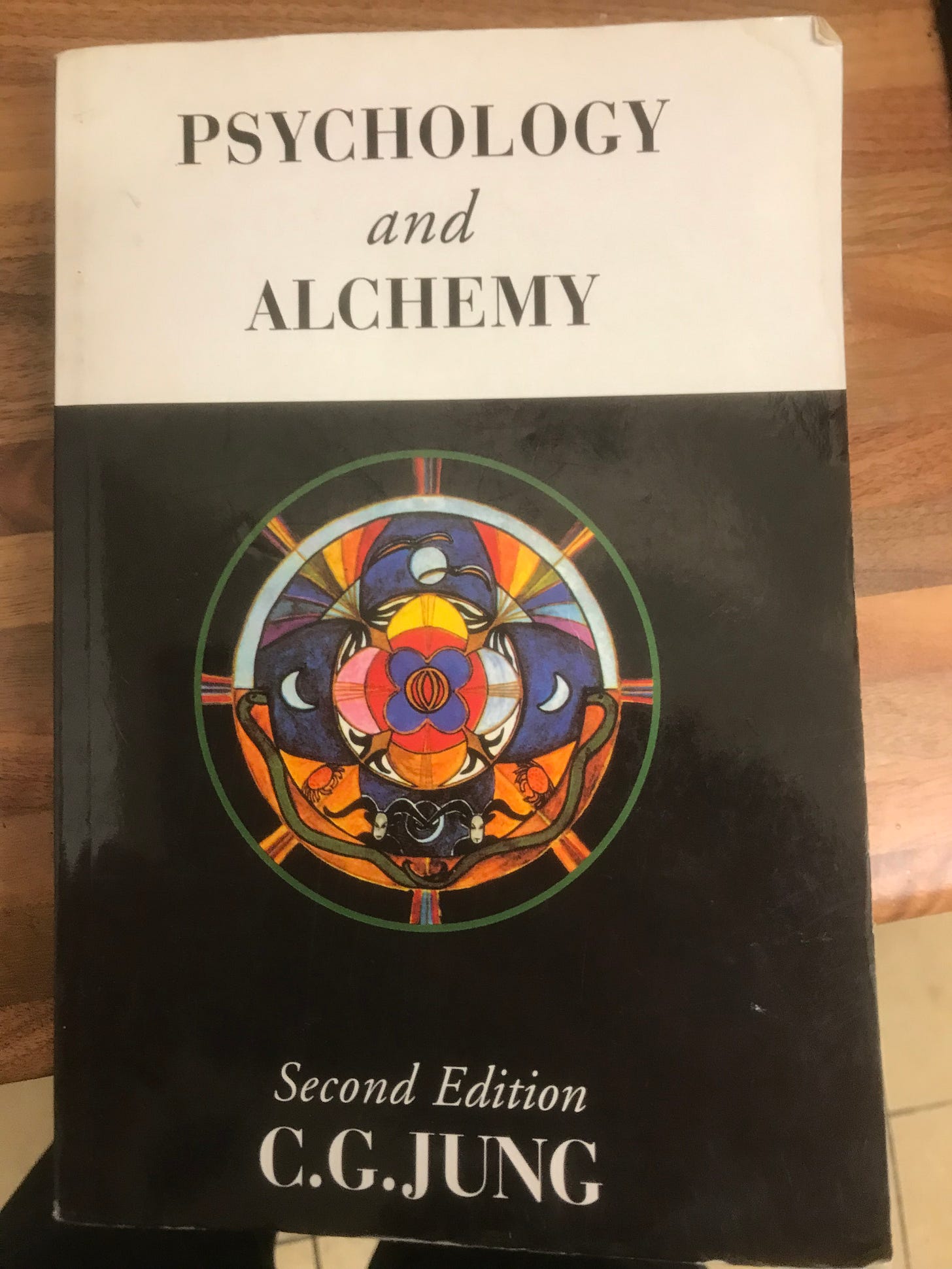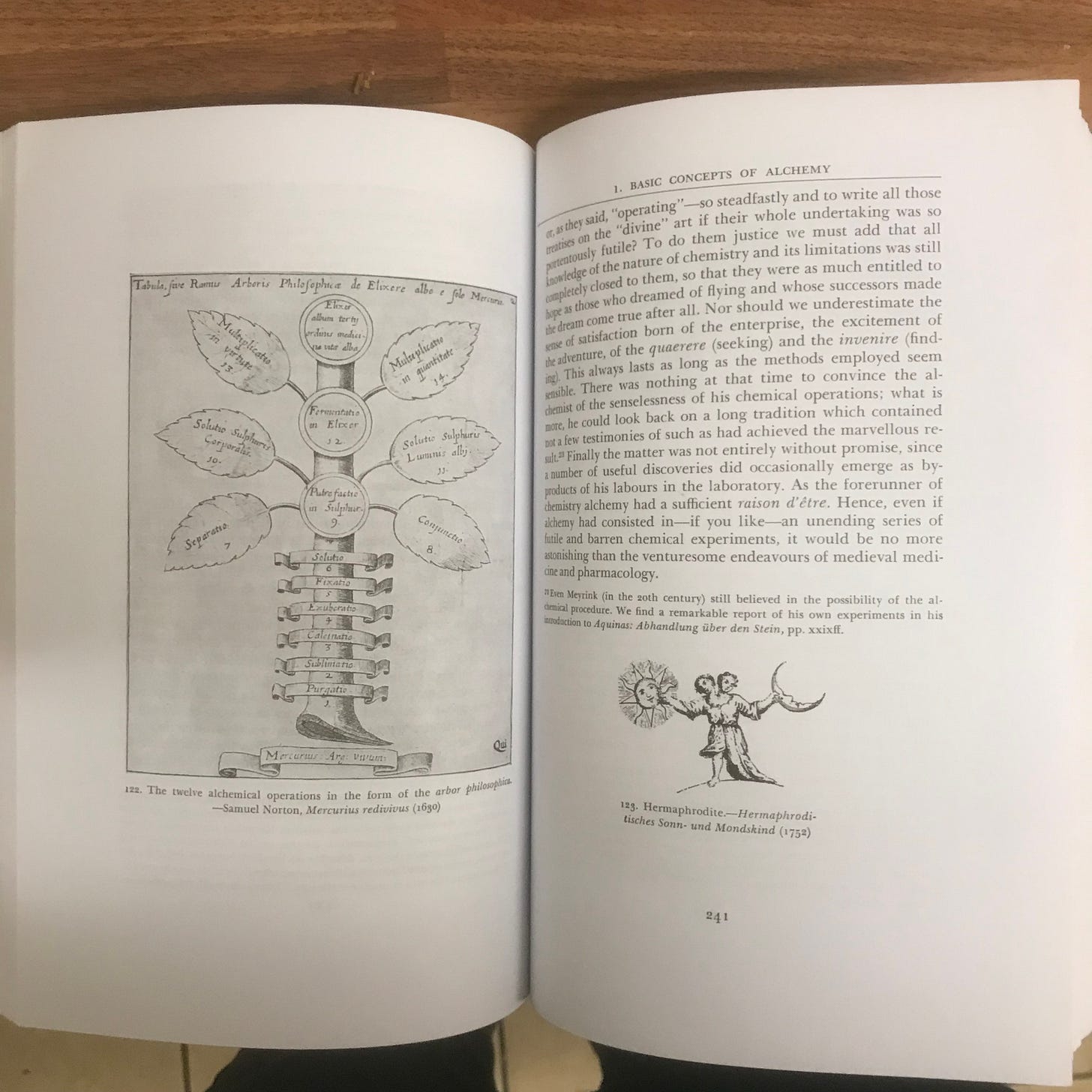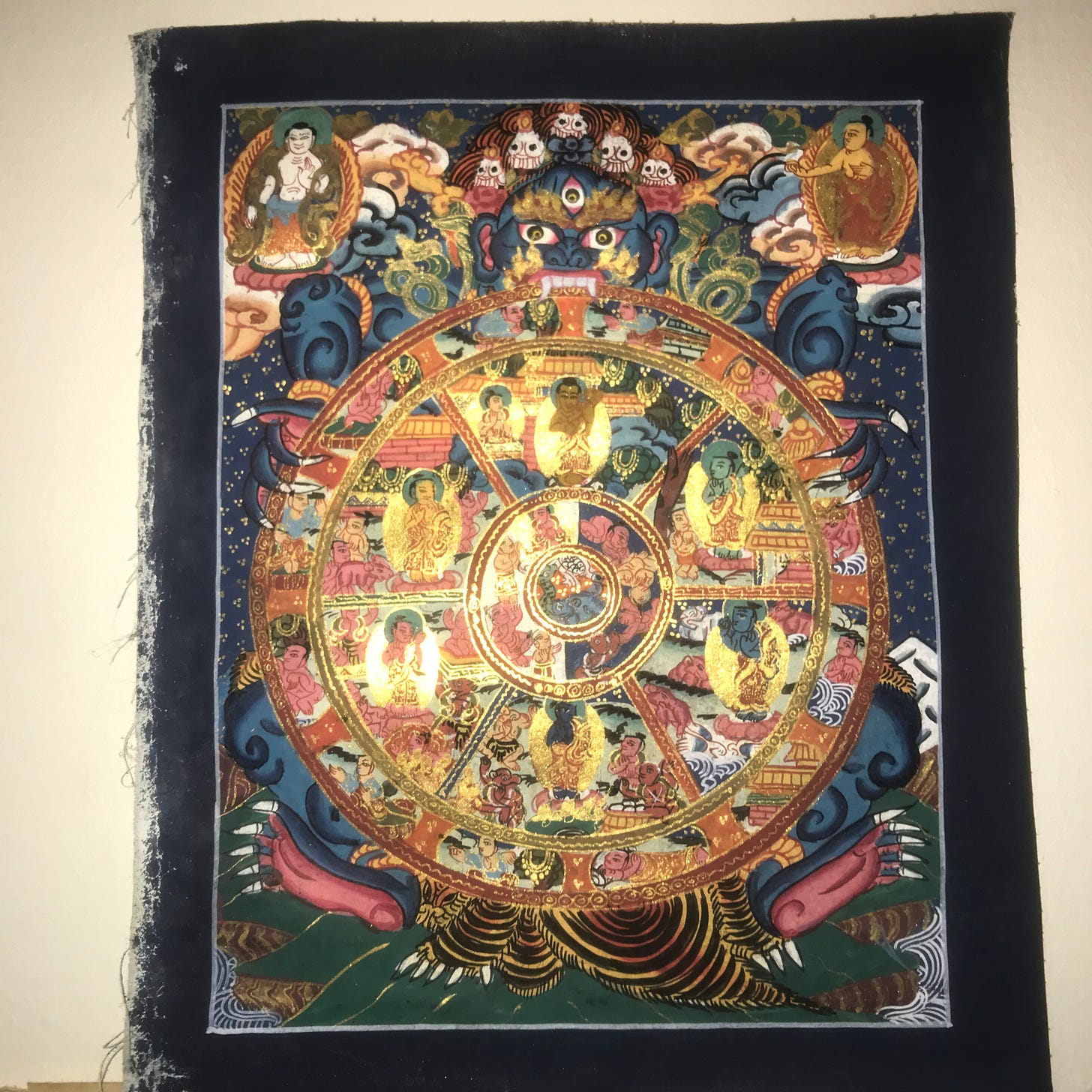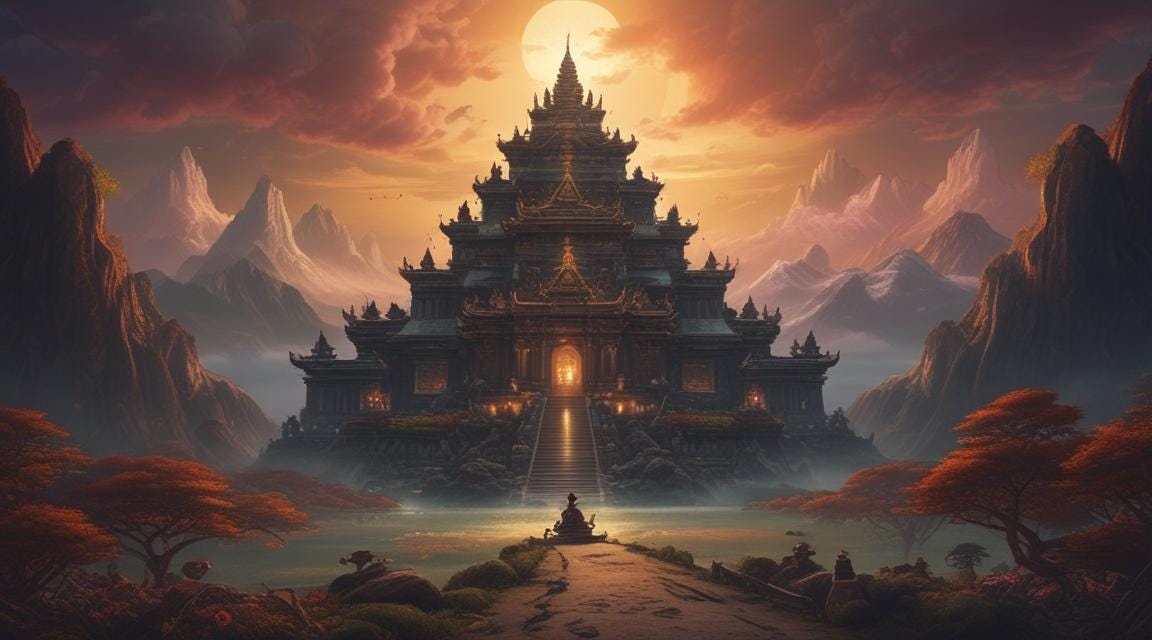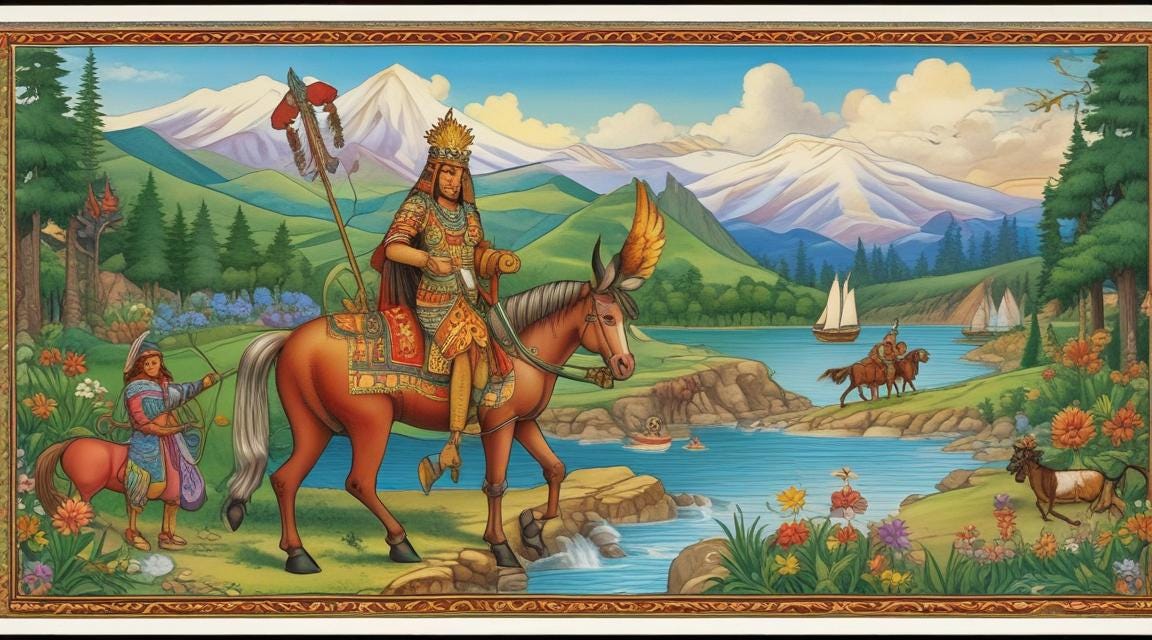I am writing this to share my personal research into Gnosticism and Buddhism. This is by no means a scholarly account, and many have written much more, with much greater skill than I have (Elaine Pagels and Professor Gilles Quispel, to name just two).
The reason I am so drawn to this subject is because of a certain belief that has remained at the crux of my existence for the past 3 years. It is as follows:
I am certain that the great religious/spiritual teachers or movements have always pointed to the same One Truth. No matter how muddled this may be by, say, misinformation or misinterpretation, or outright abuse for the sake of power, for those willing to look, the truth is there. And you can find it in The Bible and the Tao Te Ching and the movement of a dung beetle.
You may disagree, and that is fine.
I have investigated Buddhism for several years now, primarily through the works of Alan Watts, Eckhart Tolle, the internet, and recently living in a Buddhist monastery in a tiny village in rural Nepal, where I paid my dues teaching English at the local school.
Gnosticism is newer to me, so please forgive my mistakes in this piece. I first stumbled on the term Gnostic nearly 2 years ago in Carl Jung’s Psychology and Alchemy - a morbidly dense book that almost fried my circuits.
Psychology & Alchemy, C.G. Jung
The past 2 weeks I have made a serious effort to investigate the Gnostics further, and I was immediately struck by how much it resonated with my understanding of the teachings of a man called Siddhartha Gautama, better known as ‘Buddha’.
So here I am trying to make sense of some of these similarities, hopefully it’ll make some sense to you too.
Enough blathering on, here is a brief overview of the discovery of Gnosticism.
December, 1945.
Muhammed Ali al Samman (edit), an Egyptian peasant, is digging with his brothers for sabakh, a natural fertilizer used to grow crops. They strike and uncover a jar of red ceramic, and scamper away from it in fear. They engage in fierce debate; for if the pot contains a djinn, a genie, then opening it could bring them grave ill-fortune.
On the other hand, it may contain gold, so they drown caution in the sands and smash it apart with their shovels.
Within, they find not gold, nor a genie, but thirteen leather-bound books, clearly centuries old. Not able to read the strange language written on the papyrus, Muhammed Ali (no relation) brings the books home and leaves them by the oven. Over the next few weeks, his mother accidentally burns a few pages.
What the al Samman brothers could not know was that the discovery of these strange, worthless old books was perhaps the greatest religious archaeological discovery of the 20th century.
A few weeks later, while the books are languishing in obscurity, the brothers avenge their father’s death by slaughtering and eating his killer’s heart.
“The ultimate act of blood revenge,” says Muhammed Ali.
Later, as the brothers are being interrogated on suspicion of murder, Raghib, a local history teacher, came across one of the books and, suspecting it had value, sent it to a friend in Cairo to see if it could be sold.
It could indeed.
Soon, the Egyptian government, assailing the black market, acquires 11 and a half of the books, but a large portion of the 13th book (AKA codex) was smuggled out of Africa and listed for sale in the USA.
Spring, 1955
Professor Gilles Quispel of Utrecht, the Netherlands, learns of this discovery and urges the Jung Foundation in Zurich to buy the codex, soon flying to Egypt to recover the missing pages. He hurries back to his hotel room to decipher them. The first line reads:
“These are the secret words which the living Jesus spoke, and which the twin, Judas Thomas, wrote down.”
Naturally, Professor Quispel was beyond disbelief. The surviving codices set forth a remarkably different representation and portrayal of Jesus Christ, and familiar sayings took on subtle new dimensions of meaning in this strange context.
The Gnostics
The ancient Greeks differentiated between different ‘types’ of knowledge, considering them separate concepts.
The word ‘episteme,’ can be translated as scientific, rational knowledge. The Greeks differentiated this from the word ‘gnosis’ - first-hand, experiential knowledge.
(We may be more familiar with the term agnostic - not-knowing)
The so-called Gnostics, the writers of these aforementioned Nag Hammadi codices, were given this name because, in stark contrast to ‘traditional’ Christian belief, they declare that the path to the divine is found within, by attaining gnosis.
In short, that to know yourself is ultimately to know God.
Some scholars have been struck by the remarkable cohesion between Buddhist doctrine and the words of this ‘Living Jesus’ as put forth in the Nag Hammadi texts.
Let’s take a closer look.
Maya and The Demiurge: The World is Illusion
Samsara, Nepali Design (purchased in Kathmandu)
“Ignorance is the mother of all evil.” - Gospel of Philip (Gnostic)
“Ignorance… is the origin of the whole mass of suffering.” - Pattica-samuppada (Buddhist)
According to these Gnostic texts found by Muhammed Ali at Nag Hammadi, the world is a flawed creation, made by a spiteful and ignorant deity named The Demiurge - a stark contrast to the perfect, all-powerful Yahweh (God) of the Old Testament. A piece of the divine spark is trapped within each human body; the Gnostics believe that the goal of spiritual life is to attain self-knowledge in order to transcend and realise our inner divinity. It is in this sense that ignorance of the inner divinity, the seduction of the false external world, is “the mother of all evil.”
The sanskrit word maya, meaning illusion, is used in Buddhist scripture to denote the imagined material world. Similarly, the samsara (see image above), the endless cycle of death and birth, refers to the suffering (dukkha) experienced by humans trapped in attachment to the material. The aim of Buddhism is to transcend this maya, and to realise nirvana (lit. “blown out” or “ceasing to burn”) - to escape from the cycle of suffering.
Gnosis & Nirvana: The Path Lies Within
“He who has true knowledge of the self is a free man.” - Gospel of Philip
“Look within, thou art the Buddha.” - Dhammapada (The Buddha’s Path)
Secondly, the Gnostics believed that the path to ‘gnosis’, what the Buddhists might instead call ‘nirvana’ or enlightenment, involves deep, personal, experiential knowledge of the divine. This is attained by realising that the core of oneself is identical to God.
Strikingly similar is the Buddhist belief that the path to enlightenment involves realising the illusion of the external world, and insight into the true nature of reality. Nirvana is found within, hence the practice of dhyanna - meditation.
This claim by the Gnostic adherents runs strongly against the doctrine of the Catholic (lit. “for all”) church, where the divine is portrayed as something infinitely above man, something unattainable to which we bow down in our imperfection. It is for the apparent ‘blasphemy’ that God is within (and one with) ourselves that resulted in the Gnostic texts being declared banned documents by the powerful Catholic church in the mid-2nd century CE. It’s also for this reason that most scholars suspect that the Nag Hammadi texts were buried in the first place.
Bishop Irenaeus of Lyons, for example, denounced the Gnostic works as “full of blasphemy,” in his 5-volume The Destruction and Overthrow of Falsely So-called Knowledge, circa 180CE, and went on to say, “urge all those with whom you are connected to avoid such an abyss of madness and of blasphemy against Christ.”
Strong words.
The Ego as Obstacle
NOTE - it is un-Buddhist to refer to the Ego as an obstacle, for the Ego is not something to be overcome. The Ego exists by wanting, therefore by wanting to overcome the Ego, this is yet more ego… confusing, huh? Agreed
“If you bring forth what is within you, what you bring forth will save you. If you do not, then what you do not bring forth will destroy you.” - Gospel of Thomas
“If one speaks or acts with a corrupt mind, suffering follows… If one speaks or acts with a serene self, happiness follows, as surely as one’s shadow” - Dhammapada
The ego is considered a facet of maya (illusion) according to the Buddha. The ego itself survives by desire and attachment to things. This ego, and by extent the desires it attaches to, are NOT the true self. The true self can be found above and outside of this ego.
The Gnostic texts suggest that the ego is part of the false material world. The physical and egoic self are linked to the lower, false reality created by the Demiurge. Spiritual liberation involves transcending the ego and realising the divine spark within.
To me, this is one of the most incredible similarities between the two paths to liberation. Adjusting for relevant terminology, you could attribute the words of the Buddha with the words of the Gnostic ‘Living Jesus'. More on this later.
NOTE - This is by no means an exhaustive list of the similarities between the two
Explanations
We have it on good authority that Buddhist missionaries were likely to have made contact with Christians in the Western world. In addition, trade routes between the Far East and Greco-Roman world opened up in the 2nd and 3rd centuries CE. It’s very reasonable to suggest that religious ideas may have been shared through these interactions.
However, it is interesting to note that Eastern spirituality seems to have been hardly influenced by Western religions. Could the transfer of influence have only flown from East to West? Was there perhaps less interaction than we think? It’s difficult to say.
Let’s take a different approach.
Perhaps Siddhartha Gautama and Joshua of Nazareth were two men, centuries and many miles apart, who discovered some latent realm of experience within themselves that was clearly unexplored by their peers. Feeling through this discovery that they were somehow stripped of suffering/falsehood, they sought to share this experience with as many as they could. What they taught (or, if you’re atheist-inclined, the nonsense they spread), has been passed down for literal millennia.
Surely for this knowledge to have been guarded and passed down and sworn to by so many thousands before us it must have some value? Are we to believe that our ancestors were mere slathering morons who simply didn’t know better? Maybe, maybe not.
There’s a story I like: After Siddhartha Gautama (c. 6th/5th Century BCE) claimed to have “awakened,” sceptics across South Asia heard of his incredulous story. One such man was Saccaka, a respected philosopher and orator. He travelled to approach the man who claimed to be a ‘Buddha,’ to challenge him on matters of the self.
Saccaka debated fiercely, with enough oratorical skill to make any undergrad politics student blush. He supposedly argued that the body and the mind were the true self, that there was nothing above or without this, and that one could dictate their life by willpower. The Buddha, as the story goes, calmly engaged with Saccaka in this dialogue. He asked, for example, whether Saccaka could control the body so as to avoid aging, sickness, or death. If he could control his feelings and emotions, and avoid pain at will.
The discussion went on for some time, and at its end, Saccaka expressed that he now believed that he had been wrong, and that the Buddha’s teachings were of profound truth.
Maybe this is myth, with no connexion to any true event, or maybe not. Perhaps you, reader, are a fine orator, firm in your logic and confident in your world view. Would you have won the debate?
Conclusion
We might understand Gnosticism, according to its texts, as a numinous (spiritually-charged), active discipline, less deadened by mental abstraction and misinterpretation than ‘conventional’ Christianity.
From this standpoint, the reason for the apparent similarities of Gnosticism and Buddhism is clear - they both point to the same thing:
That gnosis/nirvana (liberation) is attained by accepting, and thus transcending, the maya/Demiurge (illusory material world)
Usually in a conclusion I’d summarise the points that we’ve gone through, and end with a snappy finisher. But, its 9:13PM and I’m tired, and I want to get this posted before midnight. So, with that said, thank you so much for reading; maybe you thought this was drivel or maybe something struck a chord. Good to have you here anyway.
Thanks to Elaine Pagels, author of The Gnostic Gospels, available here, and to the curators of The Gnostic Society Library. And most of all, thanks to Muhammed Ali (still no relation), for smashing open that clay jar - genie be damned.
Subscribe to the blog and next time we’ll talk about Why Cambodians Are (Probably) Aliens. Should be a ride. And stop by next Monday for part 2 of Journey of a Novice Producer.
Drop me a comment if you agree or disagree or have any questions or with anything you damn well like.
It’s all you, baby blue
Callum




